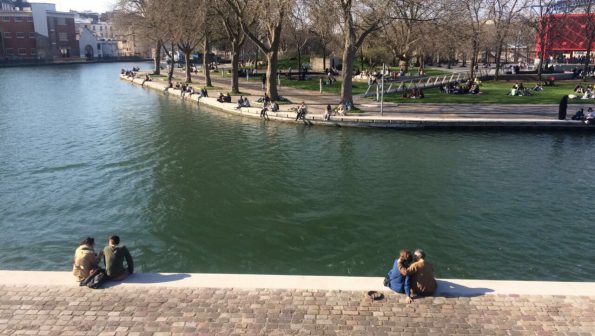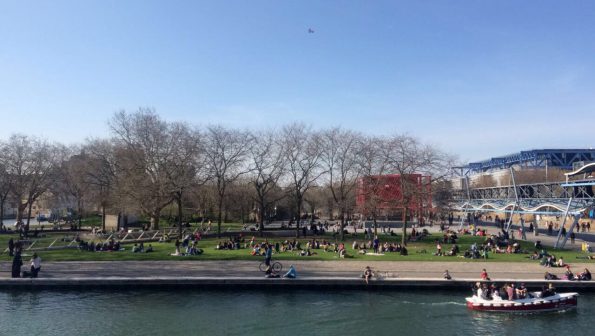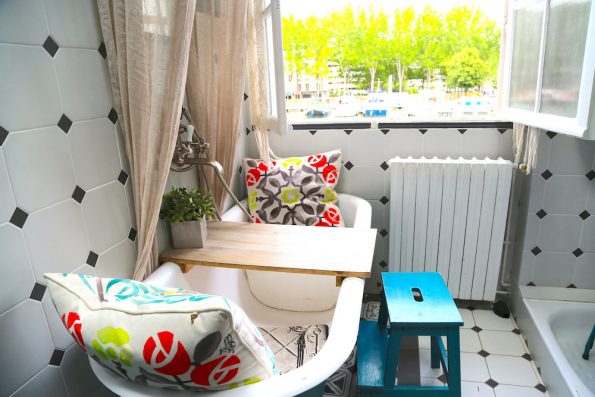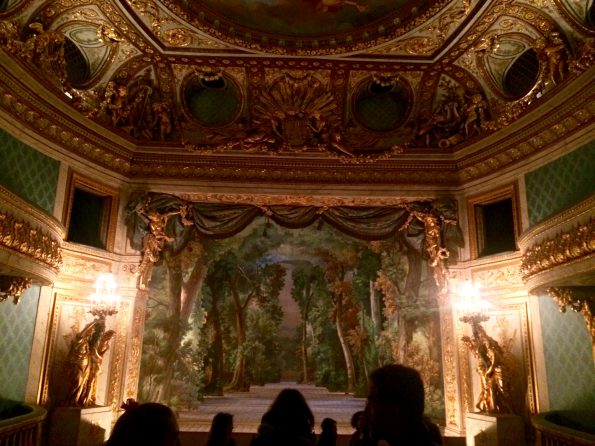by Marissa Rosenberg-Carlson
Strolling through the 19th arrondissement on the northeast end of Paris is like wading through a river of double entendre. Every place means many things. A cinema is never just a cinema. The entertainment complex MK2 has twin cinemas directly across the Canal de l’Ourcq from each other. More than theaters, they are bookends to all that happens in between. On Saturday at noon, a group of twenty-somethings on a boat zigzag through the water, blaring French rap music and sloshing beer onto the pavement.
Formerly the slaughterhouse district, the 19th is now a patchwork of city-funded housing projects, stretches of green space, brunch spots for young people, and creative arts centers. I wander up the canal, among hundreds of people who sprawl in bunches under trees. When I remove my glasses, they blur into colorful dots on the lawn. They appear like a modern Saturday’s rendering of Georges Seurat’s A Sunday Afternoon on the Island of La Grande Jatte. Life really does imitate art, it seems.
I meet Natalie, a Parisian opera singer, for brunch at eleven o’clock. The place is Pavillon des Canaux, a canal-side café that looks like a dollhouse, outfitted with mismatched furniture, plush armchairs, neon rotary phones, and creaky floorboards. Patrons can choose to dine upstairs in the living room, bedroom, or bathroom – Natalie and I stumble upon two leather-clad women nibbling croissants in the bathtub. The pavillon doubles as a community center. As we wait for our coffee we browse upcoming events, including workshops on holistic medicine, courses on how to write an online blog, and a Latin jazz soirée.
After brunch I stray until I find myself in the Parc de La Villette. La Villette is the third-largest park in Paris. Among its institutions are a symphony hall, a science and industry museum, and Cité des Enfants – a massive playspace for children. Architect Bernard Tschumi organized the park on a grid of thirty-five points called folies, marked by red structures in which park-goers can play however they please. I wind around the spiral staircase that leads into one called Folie Belvédère. I lie down in the middle of the floor inside. A young bearded man walks past me and says nothing.
Tschumi aimed to create La Villette without any coherent meaning. This he has done. In the park I notice otherwise average-seeming people becoming more absurd versions of themselves. A father wearing a suit wobbles in blue rollerblades. He clutches his daughter’s scooter, which could’ve been made for Barbie – outfitted with pink and purple streamers and fake eyelashes on the handlebars. A Charlie Chaplin film projects on an outdoor screen above him. He nearly trips over a crack in the sidewalk, in what could have been a serendipitous act of physical comedy. But he regains composure, sets the scooter on the ground, and rides away with his daughter.
Nothing quite fits together here. Playful aspects of the 19th collide with grave ones. Outside CaféZoïde, a parkside café designed exclusively for children, a graffiti artist sprays Non à l’état policier (No to the police state) on the sidewalk. These incongruities invite visitors like me to reflect. It’s as if we must aim for a more complex creative consciousness as we go beyond the well-trodden margins of the city.






